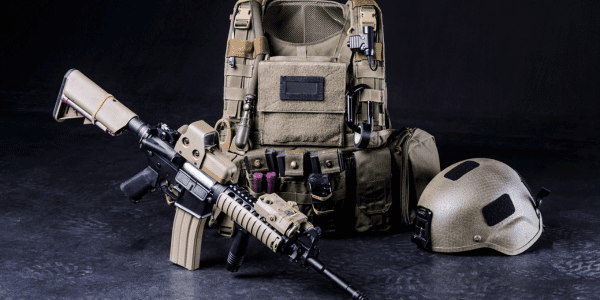Do Civilians Need a Plate Carrier or Are They Just Larping?
Unpredictable situations demand careful preparation. In a world where safety concerns can arise unexpectedly, being equipped to safeguard yourself and your loved ones is more than just a notion—it’s a necessity. Enter the plate carrier, a piece of tactical gear that’s not just reserved for the front lines.
This article dives deep into a realm often overlooked—the needs of civilians when it comes to plate carriers. We’ll unravel the reasons why everyday individuals might consider donning this specialized equipment, exploring scenarios where it could make all the difference. From home defense strategies to navigating civil unrest, we’ll dig into the practicality, legality, and essential considerations (no, a plate carrier isn’t just for larping).
Join us as we discover how plate carriers, once confined to the domain of military professionals, are making their presence felt in the lives of those who value safety and preparedness. Prepare to uncover a world where protection meets preparedness, where civilians embrace the notion that no one is coming to save them, and they are their first and last line of defense.

Table of contents
- What is a Plate Carrier?
- Why Would Civilians Need a Plate Carrier?
- Carry a Plate Carrier in Your Vehicle?
- Is It Legal to Own a Plate Carrier in the US?
- What Area Does a Plate Carrier Cover?
- Why Don’t Plate Carriers Cover the Stomach?
- How Tight or Loose Should Your Plate Carrier Be?
- How Should You Set Up Your Plate Carrier?
- What Type of Plates or Armor Should You Buy for a Plate Carrier?
- Git You Sum (or at Least ONE Plate Carrier)!
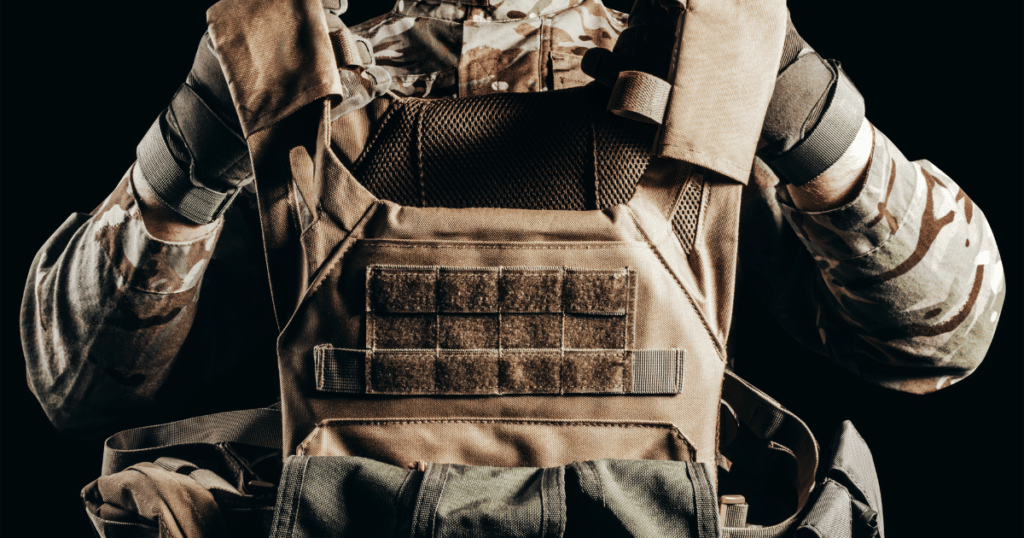
What is a Plate Carrier?
A plate carrier is a piece of tactical gear designed to hold ballistic armor plates that protect the wearer’s torso. It is commonly used by military personnel, law enforcement officers, and other tactical operators who require enhanced protection in potentially dangerous situations. The primary purpose of a plate carrier is to distribute the weight of ballistic plates evenly across the wearer’s body while allowing for a range of motion and flexibility.
Plate carriers are typically made from durable materials like nylon or other high-strength fabrics. They consist of a vest-like harness system that can be adjusted to fit the wearer’s body size and shape. These carriers have pouches and attachment points to hold ballistic plates in front and back pockets, covering vital organs and protecting against projectiles like bullets or shrapnel.
The level of protection a plate carrier offers depends on the type and level of ballistic plates inserted into the carrier’s pockets. These plates come in various materials and protection levels, such as Level III, Level IV, or specialized plates designed to withstand different types of threats.
Related Article: Beyond the Gym — Tactical Training for Real-World Preparedness
In addition to ballistic protection, plate carriers often feature MOLLE (Modular Lightweight Load-carrying Equipment) webbing, which allows users to attach various pouches, equipment, and accessories like magazine pouches, medical kits, communication devices, and other essential tools. This modularity makes plate carriers versatile and adaptable to different operational needs.
It’s important to note that plate carriers are a specialized piece of gear intended for use in high-risk situations and are not typically worn by civilians in everyday life due to their tactical nature and the weight of the protective plates.
Why Would Civilians Need a Plate Carrier?
Civilians might consider using a plate carrier for specific situations where personal protection is a significant concern. However, it’s important to approach this topic with caution and consider local laws and regulations regarding the possession and use of such equipment.
Here are a few scenarios where civilians might consider using a plate carrier:
1. Self-Defense and Home Protection
In areas where personal safety is a concern and where there might be a risk of encountering armed individuals, civilians might choose to have a plate carrier with ballistic plates as part of their home defense strategy. This is a rare and extreme measure, and other forms of home security should be prioritized first.
2. Civil Unrest and Riots
During instances of civil unrest, protests, or riots where there is potential for violence or the use of force by authorities, some civilians might choose to wear a plate carrier for added protection. However, this should be done while adhering to local laws and ensuring that the intention is peaceful protest rather than provocation.
3. Extreme Recreational Activities
In some cases, individuals engaged in high-risk recreational activities like airsoft, paintball, or other simulation games might use plate carriers for a more realistic experience or added protection. These activities often mimic tactical scenarios, and participants might choose to wear plate carriers for authenticity.
4. Emergency Preparedness
Individuals who are very focused on emergency preparedness might include plate carriers as part of their bug-out or survival gear. However, the practicality of wearing such gear for extended periods should be carefully considered.
5. Professional Roles of a Plate Carrier
Certain civilian roles, such as private security personnel, bodyguards, or individuals engaged in high-risk work environments, might find plate carriers useful for personal protection while on duty.
It’s crucial to approach the idea of using a plate carrier as a civilian with careful consideration and awareness of legal and social factors. Plate carriers can be heavy, restrictive, and potentially intimidating, and their use should be based on a realistic assessment of the risks and needs of the situation. Before acquiring such equipment, individuals should also undergo proper training to understand how to use and wear it effectively.
Carry a Plate Carrier in Your Vehicle?
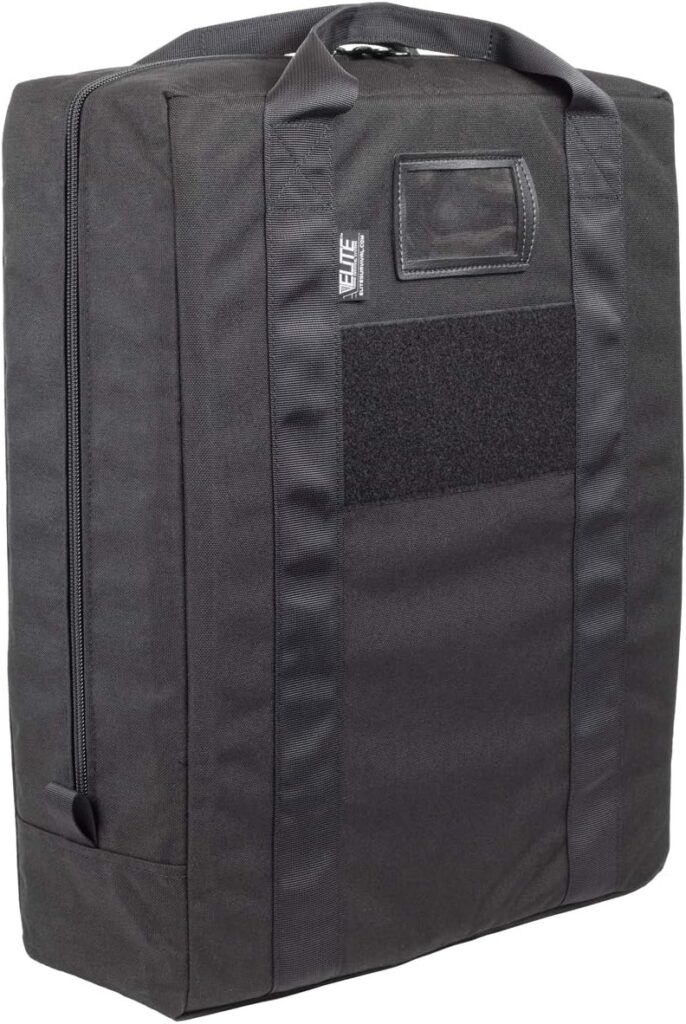
Your mileage may vary, but I’m one to carry not just one plate carrier in my vehicle, but multiple. Why? Because two is one and one is none. If I have the space, I’m carrying all the tools I need for any scenario. I used to carry my plate carriers in my trunk just sitting there, and then I got the Elite Survival Systems Body Armor Transport Bag.
Inside the Elite Survival Systems Body Armor Transport bag, I keep two plate carriers ready to go. While there’s nothing wrong with sitting the plate carriers in your trunk, I always wanted the ability to conceal them so that people around my vehicle wouldn’t see them when I open my trunk. This was the perfect solution.
I personally use and highly recommend this bag. It’s built like a tank, specifically designed to handle the weight and awkwardness of a fully loaded plate carrier. What I love about it is the rugged construction and thoughtful design — you’re not dealing with a standard duffel here. It has reinforced handles, heavy-duty zippers, and enough room not only for your carrier, but also for extra gear like mags, gloves, trauma kits, and more.
Another huge benefit? Discretion. The bag doesn’t scream “tactical” or “I’m carrying body armor,” which is a plus if you want to keep a low profile. And with multiple compartments and smart internal organization, your gear stays protected and easy to grab when seconds count.
Bottom line: if you’re keeping a plate carrier in your vehicle (which I highly recommend), you need a reliable way to store and transport it. The Elite Survival Systems Body Armor Transport Bag checks every box — durability, function, and stealth. It’s a no-brainer addition to your trunk loadout.
Is It Legal to Own a Plate Carrier in the US?
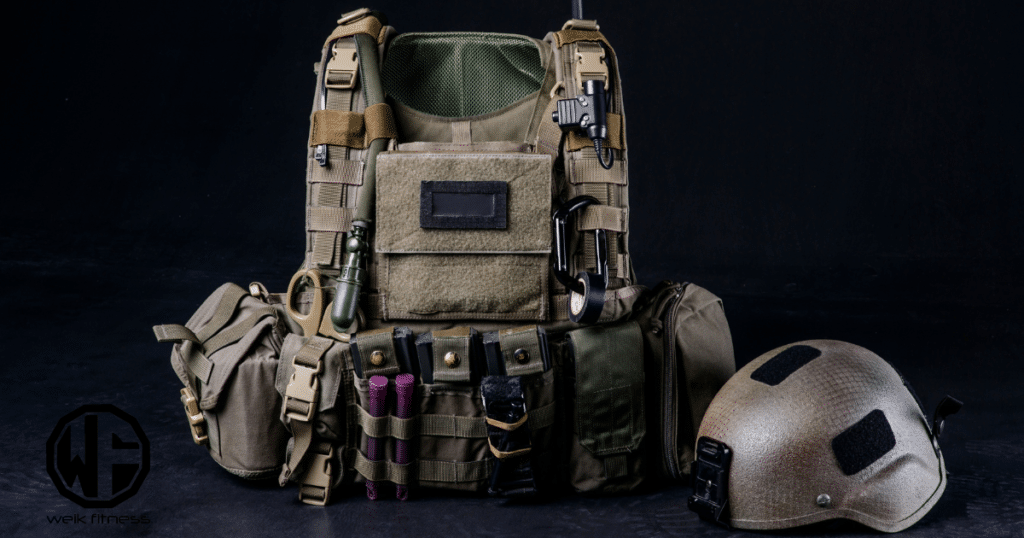
Unless you live in an anti-freedom state, owning a plate carrier itself is generally legal in the United States. Plate carriers are considered a piece of tactical gear and are available for purchase from various retailers, both online and in physical stores.
Related Article: Ready Gear — The Tactical Advantage of a Rapid Deployment Pack
However, the legality might vary based on the specific jurisdiction and certain factors related to the use of such gear, so please check your state and local laws to understand the legality of owning a plate carrier.
Here are a few important points to consider:
- Plate Carrier vs. Ballistic Plates: The legality of owning a plate carrier is generally separate from the legality of owning ballistic plates. Ballistic plates are the components that provide protection, and their ownership and use could be subject to more regulations. Different jurisdictions might have varying rules about the possession and use of ballistic plates designed to stop bullets.
- State Laws: Laws can vary widely between states in the US. Some states might have restrictions on possessing certain types of body armor or purchasing ballistic plates by civilians. It’s important to research and understand the laws in your state regarding possessing and using body armor.
- Felony Restrictions: Federal law prohibits the possession of body armor by individuals who have been convicted of certain felonies. This is outlined in the “Gun Control Act of 1968” under Title 18, United States Code, Section 931.
- Intent and Usage: The legality of owning a plate carrier or body armor might also be influenced by your intent and how you plan to use it. For example, using body armor during the commission of a crime could lead to additional charges.
- Laws Can Change: Laws regarding body armor can change, and new regulations could be implemented. It’s essential to stay informed about any updates to local, state, or federal laws.
Since laws can change and vary by location, it’s strongly recommended that you consult with legal authorities, local law enforcement, or legal experts in your area to get the most accurate and up-to-date information about the legality of owning a plate carrier and ballistic plates in your specific jurisdiction.
What Area Does a Plate Carrier Cover?
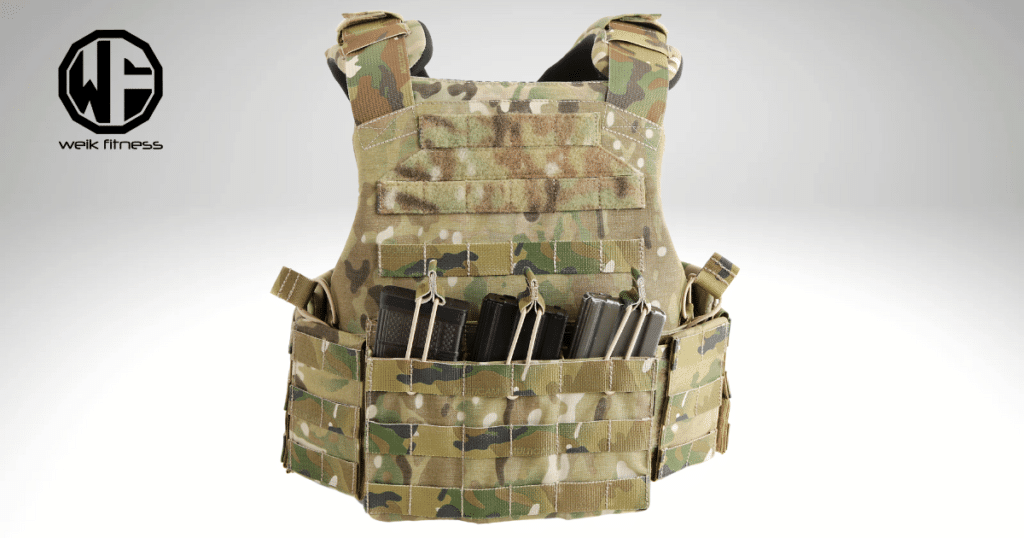
A plate carrier is designed to protect the wearer’s torso, primarily covering the front and back of the upper body. The specific areas covered by a plate carrier depend on the design and configuration of the carrier itself, as well as the type and size of ballistic plates inserted into it.
Here’s a general overview of the areas typically covered by a plate carrier:
- Front Panel: The front panel of a plate carrier covers the chest area, including the heart and vital organs. It extends from the collarbone down to the lower abdomen. The extent of coverage can vary based on the size and design of the carrier.
- Back Panel: The back panel of the plate carrier covers the upper and mid-back area, including the spine and other vital organs. Similar to the front panel, the coverage might vary based on the carrier’s design.
- Shoulders and Collar: Plate carriers often have shoulder straps that connect the front and back panels. These straps help distribute the weight of the carrier and provide a secure fit. Some plate carriers also include a collar or neck protection, though this is not always the case.
- Sides: Depending on the design and size of the carrier, some models might offer additional side protection. This can be in the form of optional side plate pockets or integrated side protection panels.
It’s important to note that while plate carriers provide valuable protection to the vital organs in the chest and back, they do not cover the entire body. A plate carrier typically does not cover the limbs, head, and lower abdomen. Additionally, the level of protection a plate carrier provides depends on the type and level of ballistic plates inserted into it. Different plates offer varying degrees of protection against various kinds of threats.
Related Article: New Body Armor Standards — What’s Different with NIJ 0101.07?
Before using a plate carrier, you should receive proper training on its use, understand its limitations, and ensure that you’re using appropriate protective gear for the situation you’re preparing for.
Why Don’t Plate Carriers Cover the Stomach?
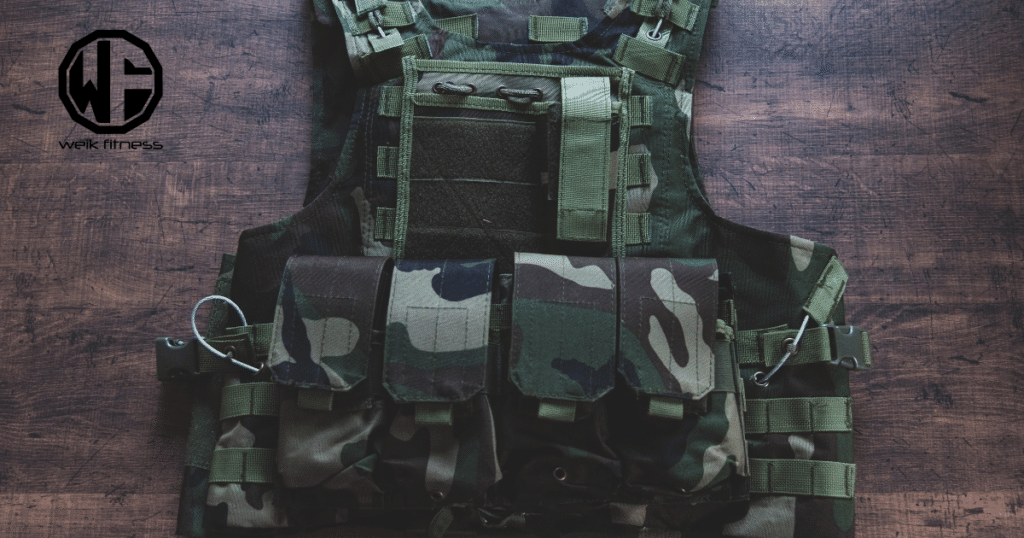
Plate carriers are designed to protect the wearer’s vital organs, specifically the heart, lungs, and other organs located in the chest and back. Not covering the stomach area with ballistic plates is often a trade-off between protection, mobility, and practicality.
There are a few reasons why plate carriers typically don’t cover the stomach:
- Mobility and Flexibility: The stomach area is crucial for maintaining a wide range of motion and flexibility. Covering the stomach with rigid ballistic plates could significantly limit the wearer’s ability to bend, twist, and move comfortably, which could be detrimental in dynamic and fast-paced situations.
- Weight and Comfort: Adding ballistic plates to cover the stomach would increase the overall weight of the plate carrier. Distributing this weight evenly across the wearer’s front, back, and shoulders is crucial to maintain comfort and prevent fatigue during extended periods of wear.
- Balancing Protection: The main goal of a plate carrier is to protect vital organs while allowing the wearer to perform their duties effectively. The plate carrier balances protection and mobility by focusing on the chest and back, where vital organs are located.
- Target Profile: In many tactical situations, threats are more likely to come from the front or back rather than directly from the stomach area. By covering the chest and back, plate carriers address the most likely angles of attack while still providing flexibility.
- Design and Fit: Designing a plate carrier to effectively cover the stomach while maintaining comfort and mobility can be challenging. Achieving a snug and secure fit that doesn’t restrict movement is crucial, and adding protection to the stomach area could complicate this design.
It’s important to remember that plate carriers are designed for specific tactical scenarios where protection is needed against ballistic threats. They are not intended to provide comprehensive protection for the entire body. Different types of body armor, such as soft armor or combination systems, might offer additional coverage to areas like the abdomen.
Related Article: Stripped-Down Tactical — Embracing Minimalist Chest Rig Design
Additionally, deciding what to wear and how to balance protection and mobility should be based on a thorough understanding of the specific operational needs and risks involved.
How Tight or Loose Should Your Plate Carrier Be?
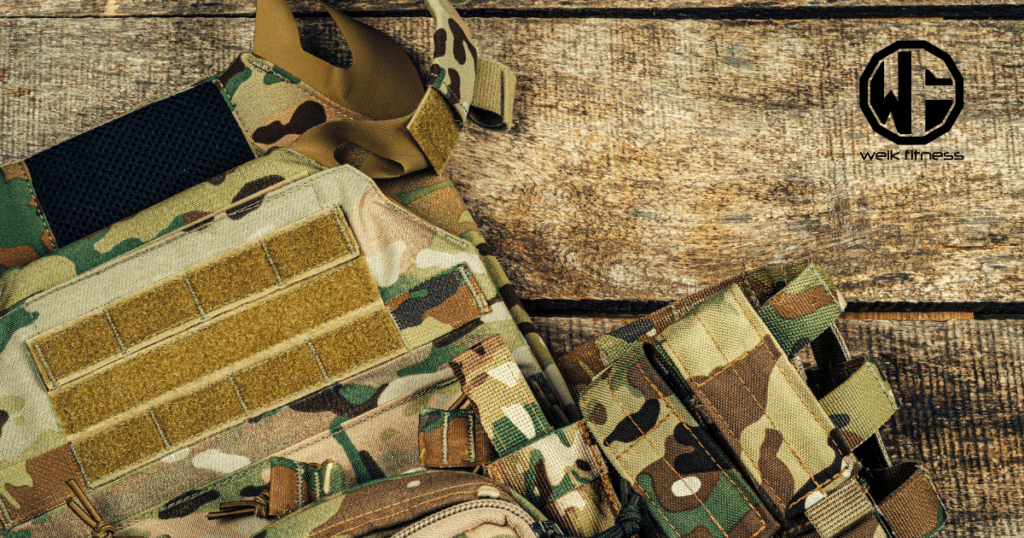
The fit of your plate carrier is crucial for both comfort and functionality. It’s important to strike a balance between a plate carrier that is too tight and restrictive and one that is too loose and unstable.
Here are some guidelines to consider when adjusting the fit of your plate carrier:
1. Snug, but not Restrictive
- The plate carrier should fit snugly against your body without causing discomfort or constriction of movement.
- Straps and adjustments should be tightened enough to prevent excessive bouncing or shifting during movement but not so tight that they dig into your skin or restrict your ability to breathe.
2. Range of Motion
- When wearing the plate carrier, you should be able to move your arms, shoulders, and torso comfortably without feeling constricted.
- Test movements like raising your arms, bending over, and squatting to ensure the plate carrier doesn’t hinder your mobility.
3. Weight Distribution of the Plate Carrier
- The weight of the plate carrier and the ballistic plates should be evenly distributed across your shoulders and upper body.
- Adjust the straps so that the weight doesn’t excessively pull down on your shoulders or create pressure points.

4. Stability
- The plate carrier should stay in place while you’re moving. Avoid having it shift around, as this can cause discomfort and compromise your ability to respond effectively.
5. Breathing and Comfort
- Ensure that the fit allows you to breathe comfortably and deeply without feeling restricted.
- Straps and adjustments should be secure but not so tight that they impact your ability to take full breaths.
6. Layers of Clothing
- Consider the type of clothing you’ll be wearing under the plate carrier. If you’ll be wearing it over bulkier layers, adjust the fit accordingly to accommodate the extra thickness.
7. User Preference
- Different individuals have different comfort preferences. Some might prefer a snugger fit, while others might opt for a slightly looser fit. The key is to find a balance that suits your comfort and operational needs.
It’s important to remember that proper fit is not only about comfort but also about safety. A poorly fitted plate carrier can become a liability, causing discomfort, fatigue, and even hindering your ability to respond effectively in high-stress situations.
When adjusting your plate carrier, take your time to find the right fit and consider seeking guidance from experienced personnel or trainers who can help you achieve the best balance between comfort and functionality.
How Should You Set Up Your Plate Carrier?
Setting up your plate carrier involves arranging it to maximize its functionality and suit your operational needs. The setup can vary based on your role, mission requirements, and personal preferences.
Here’s a general guide on how to set up a plate carrier:
1. Ballistic Plates
- Insert your chosen ballistic plates into the carrier’s front and back plate pockets. Make sure they’re properly seated and secured.
2. Adjust the Fit of the Plate Carrier
- Put on the plate carrier and adjust the shoulder straps and side straps to achieve a snug and comfortable fit. The carrier should distribute the weight evenly across your upper body.
3. MOLLE Attachment
- Most plate carriers have MOLLE webbing on the front, back, and sides. MOLLE (Modular Lightweight Load-carrying Equipment) allows you to attach pouches and accessories as needed.
- Attach pouches strategically based on your operational needs. Common pouches include magazine, utility, medical, and communication pouches.
- Consider the balance of weight and accessibility. Important items should be easily reachable and balanced to avoid affecting your mobility.
4. Front Panel
- Attach pouches based on priority. For example, magazine pouches, radio pouches, and a medical kit could be placed on the front panel.
- Consider the layout’s symmetry and accessibility. Pouches should be positioned for ease of use.
5. Back Panel
- Depending on your needs, you might attach additional pouches or equipment to the back panel. However, the back is often reserved for hydration systems, communication equipment, or other larger items.
6. Side Panels
- Some plate carriers have MOLLE webbing on the sides for attaching smaller pouches or gear.
- Side pouches might hold items like extra magazines, multitools, or medical supplies.
7. Cummerbund or Side Straps
- Many plate carriers use a cummerbund or side straps to secure the carrier around your waist.
- Adjust these straps for a snug fit while ensuring that they don’t restrict your movement or breathing.
8. Consider Ergonomics
- Think about the order in which you’ll need to access your equipment. Organize pouches based on ease of use and your anticipated actions.
9. Test and Adjust Your Plate Carrier
- Once you’ve set up your plate carrier, perform a series of movements to ensure that the gear stays in place, doesn’t hinder your mobility, and remains comfortable.
- Adjust straps and pouch placement as needed based on your testing.
Remember that your plate carrier setup should be tailored to your specific needs and operational requirements. Regularly assess and adjust your setup based on evolving mission needs and personal experiences.
Related Article: Situational Awareness — Defense Through Environmental Perception
Additionally, seek advice from experienced professionals who can provide valuable insights into effective plate carrier setup for your specific use case.
What Type of Plates or Armor Should You Buy for a Plate Carrier?
The type of plates or armor you should buy depends on your specific needs, intended use, and the level of protection required. Different types and levels of ballistic plates and armor are available, each designed to provide varying degrees of protection against different types of threats.
Here’s a breakdown of the common types of plates and armor, along with their typical uses:
1. Soft Armor
- Soft armor is typically made from flexible materials like Kevlar and is designed to provide protection against handgun rounds and some shotgun blasts.
- It’s lightweight and comfortable to wear, making it suitable for everyday wear by law enforcement officers or individuals in potentially dangerous areas.
- Soft armor is less effective against high-velocity rifle rounds.
2. Hard Armor Plates
- Hard armor plates are rigid and are usually made from materials like ceramic, steel, or composite materials.
- They offer protection against higher-velocity threats like rifle rounds, making them suitable for military personnel and law enforcement officers in high-risk scenarios.
- Hard armor plates can be heavier and less flexible compared to soft armor.
3. Level III Plates
- Level III plates are designed to stop most common rifle rounds, including 7.62x39mm and 5.56x45mm.
- They offer a higher level of protection than soft armor but can be heavier and bulkier.
4. Level IV Plates
- Level IV plates protect against armor-piercing rifle rounds in addition to the threats stopped by Level III plates.
- These plates are heavier due to the additional protection they offer.
5. Specialized Plates
- Some plates are designed to protect against specific threats, such as armor-piercing (AP) rounds or specific types of projectiles.
- Specialized plates might be required for specific operational needs.

When deciding what type of plates or armor to buy, consider the following factors:
- Threat Assessment: Determine the most likely threats you might face. Are you more concerned about handgun rounds, rifle rounds, or both?
- Operational Role: Consider your role and whether you’re a civilian looking for personal protection, a law enforcement officer, or a military personnel member. Different roles have different threat profiles.
- Comfort and Mobility: Balancing protection with comfort and mobility is crucial. Heavier plates might provide more protection but could limit your movement and stamina.
- Durability and Maintenance: Some materials are more durable than others, but they might require additional care and maintenance.
- Budget: High-quality armor can be expensive, so set a budget and prioritize your needs accordingly.
- Legal Considerations: Research the legality of owning and using ballistic plates in your area.
When purchasing armor, ensure that the plates meet recognized ballistic standards and have been tested by reputable organizations. Be cautious of counterfeit or unproven armor products.
Consulting with professionals in your field, such as law enforcement trainers or military advisors, can provide valuable insights into the most suitable type of armor for your needs.
Git You Sum (or at Least ONE Plate Carrier)!
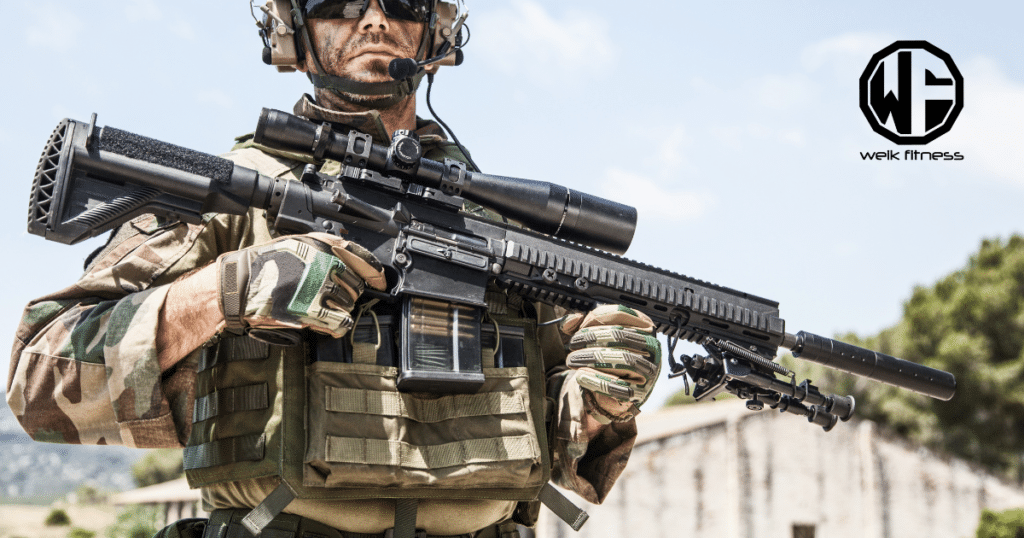
As the world continues to reveal its uncertainties, one truth remains constant: the power of preparedness. The plate carrier, once an emblem of specialized roles, has evolved to bridge the gap between professional and civilian spheres. From safeguarding your home to navigating the unknown, its utility knows no bounds. Don it with your favorite AR-15 or AR pistol and you have a great setup.
Related Article: How To Dry Fire at Home to Improve Your Shooting Skills
By now, you’ve seen the potential—the intersection of protection and readiness that can empower you and your loved ones. The decision to secure a plate carrier isn’t just a choice, it’s an investment in peace of mind, a tangible commitment to facing the unpredictable with courage and resilience.
Don’t wait for the unexpected to knock on your door. Step into the world of prepared civilians and embrace the future with gear tailored to your safety. The call-to-action echoes clearly—arm yourself with knowledge, explore your options, and make a choice that could make all the difference.
The time to protect yourself and your loved ones is right now. The plate carrier is your ticket to a safer tomorrow.
As a side note to close out this article, if you want to support our website and are in need of any tactical gear (or any product for that matter), anything you purchase using our links below will provide us with a small commission. We don’t charge for our free content and our goal is to keep it that way. We don’t have a Patreon account to put things behind a paywall, nor do we sell pics of our feet on OnlyFans.
If you choose to use the links below and make a purchase (at no additional cost to you), we greatly appreciate your support as it helps us continue to publish free content (like this article) on our website:
- Optics Planet (use code SAS5 at checkout for 5% off)
- Amazon
We have also partnered with CCW Safe. It’s the concealed carry coverage that I personally have for myself and my family in the event we need to defend our lives. Feel free to use our CCW Safe link to sign up and get some coverage to protect yourself and your family.
Also if you have a product you would like us to check out and potentially review, please contact us and let’s discuss.


*Disclosure: This article may contain affiliate links or ads, which means we earn a small commission at no extra cost to you if you make a purchase through these links. These commissions help support the operation and maintenance of our website, allowing us to continue producing free valuable content. Your support is genuinely appreciated, whether you choose to use our links or not. Thank you for being a part of our community and enjoying our content.
PLEASE CONSIDER SHARING THIS ON YOUR SOCIAL MEDIA TO HELP OTHERS LEARN MORE ABOUT THIS TOPIC.


